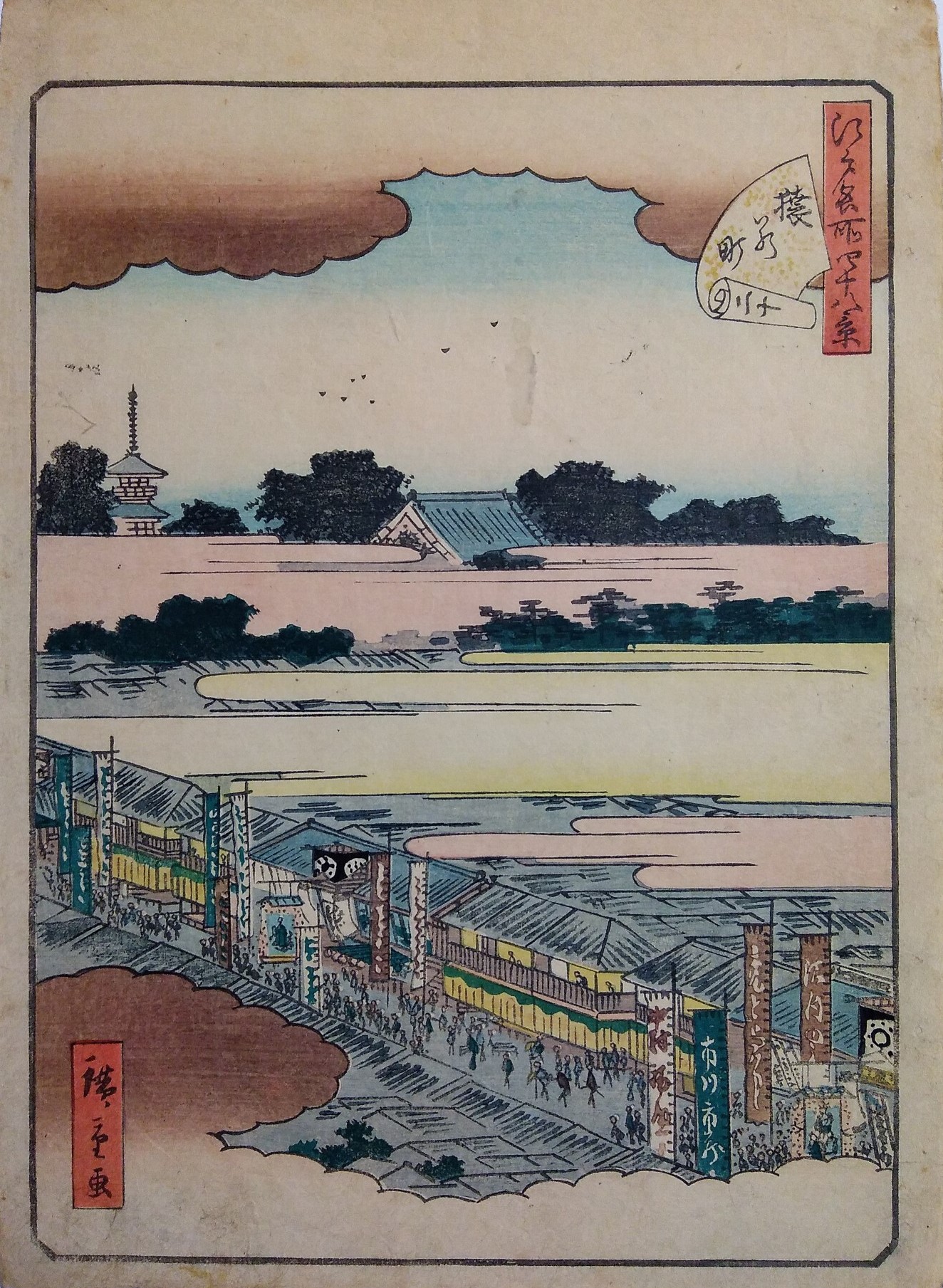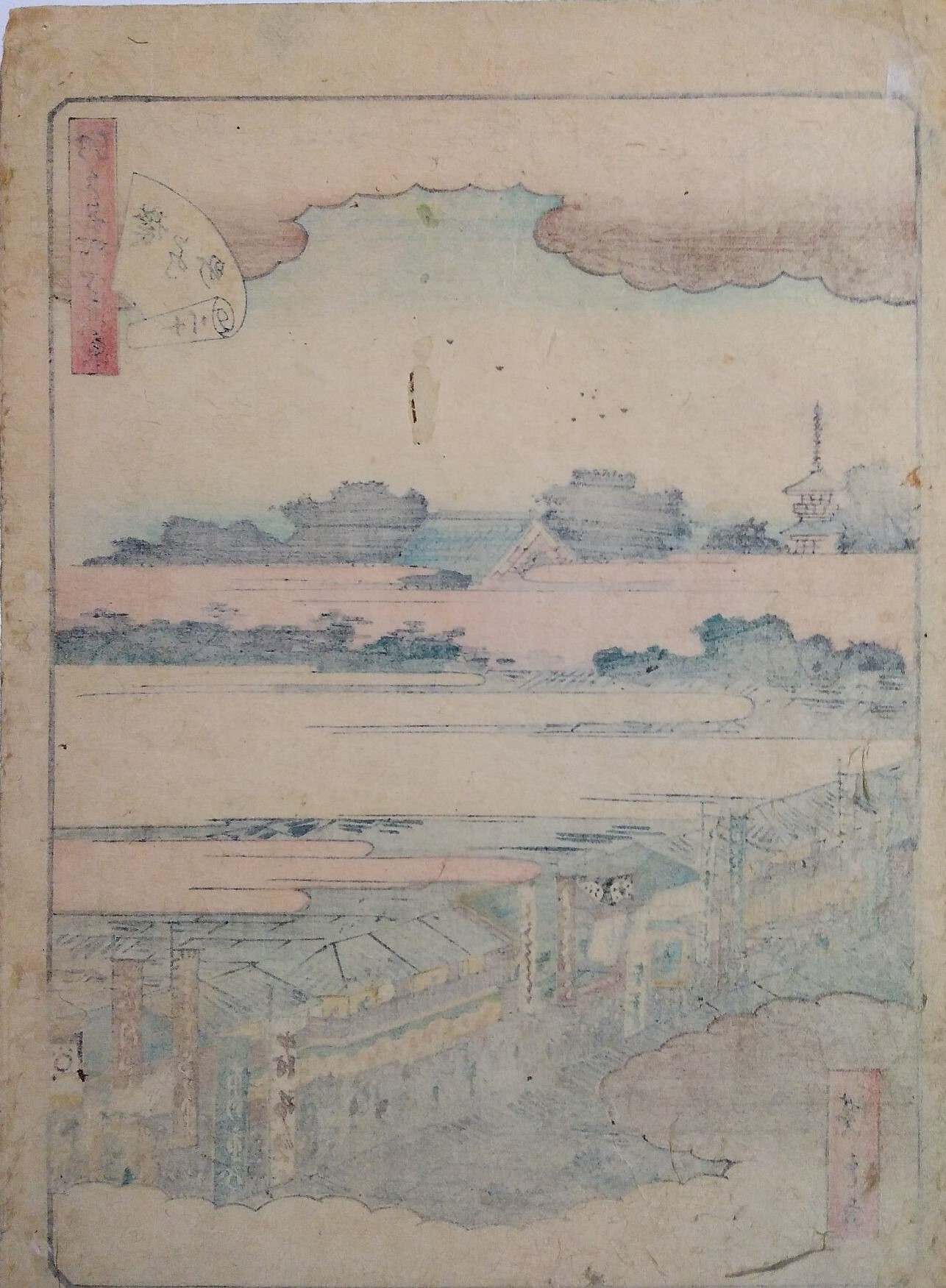


Color is good and clear with no heavy sign of fading. Few stains and wrinkles on the front and back corners, but any holes nor remarkable sign of damage. The print is enjoyable in its integrity.
Saruwakachō (猿若町).
Saruwakachō was settled in the Taitō district of Edo, precisely in Asakusa, and since 1841, as a consequence of the Tenpō reforms, became the licensed Kabuki theatre district of the city.
The name of the area seems to recall the one of Saruwaka (Nakamura) Kanzaburō who is said to have been the founder of Edo-style Kabuki.
From the beginning of the Edo era onward kabuki , puppetry and other performances related theaters which were previously located in Sakaichō (Nakamura Theater), Fukiyachō (Ichimura Theater) and Kobikichō (Morita Theater)
were ordered to be moved here. The street was lively and colorful, filled with billboards, placards and flags advertising plays, actors and tea houses which offered food, rest and guidence to the visitors.
The district kept flourishing until the beginning of the Meiji Era, when the theaters start being relocated one after another letting the area, inevitably, slowly disappearing.
Color is good and clear with no heavy sign of fading. Few stains and wrinkles on the front and back corners, but any holes nor remarkable sign of damage. The print is enjoyable in its integrity.
| Price | |
|---|---|
| Series | Forty eight famous views of Edo. (Edo meisho yonjū hakkei, 江戸名所四十八景). |
| Author | Utagawa Hiroshige II (二代目広重). |
| Size | Medium (chūban, 中判). |
| Publisher | Tsutaya Kichizō (蔦屋吉蔵), here as Tsutakichihan (蔦吉版). |
| Number | 20/48 |
| Genre | Meisho-e (名所絵), fūkei-ga (風景画). |
| Period | 1860 ~ 1861 |
| Trimmed | No |
| Backed | No |
| Code | UGHII01007 |
